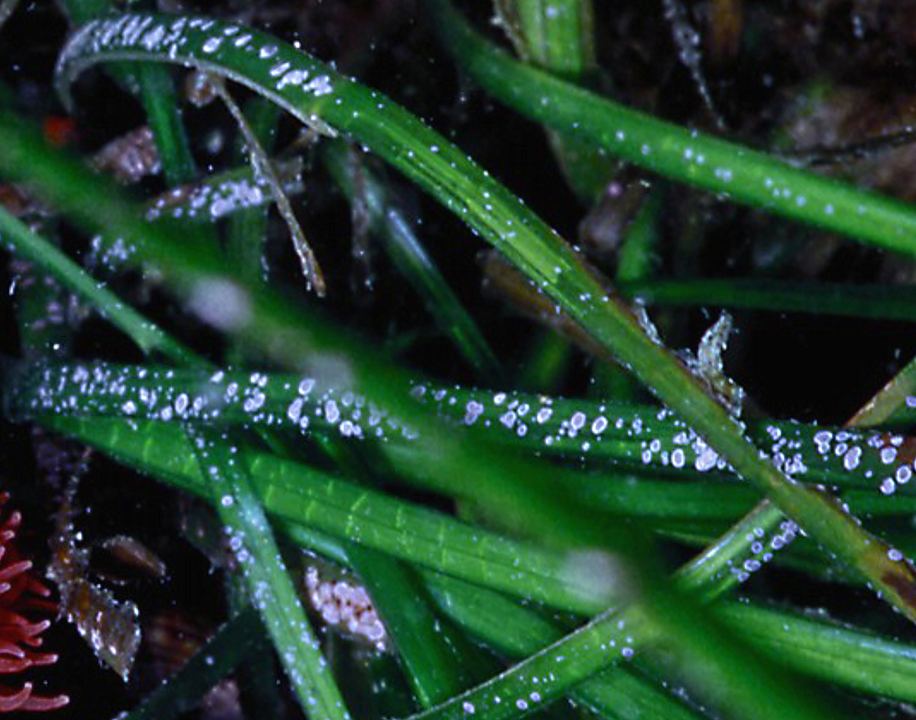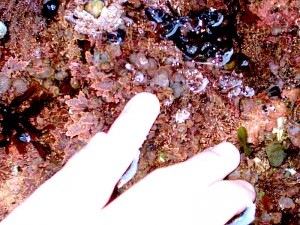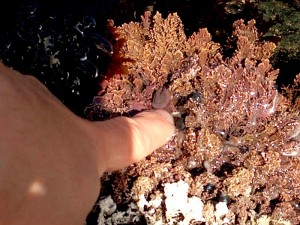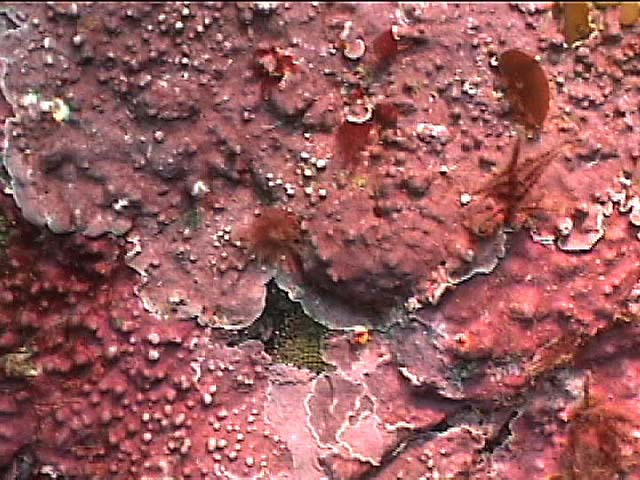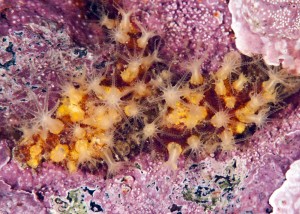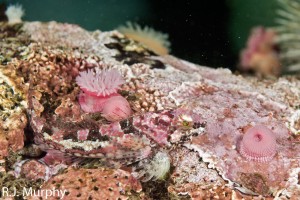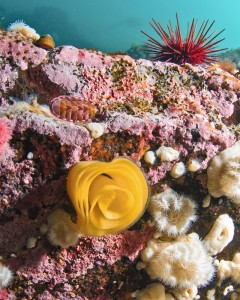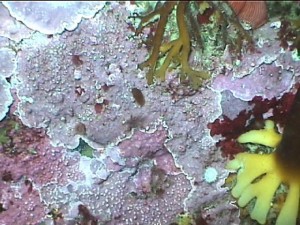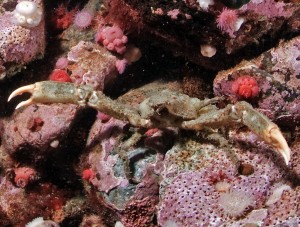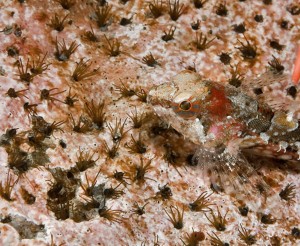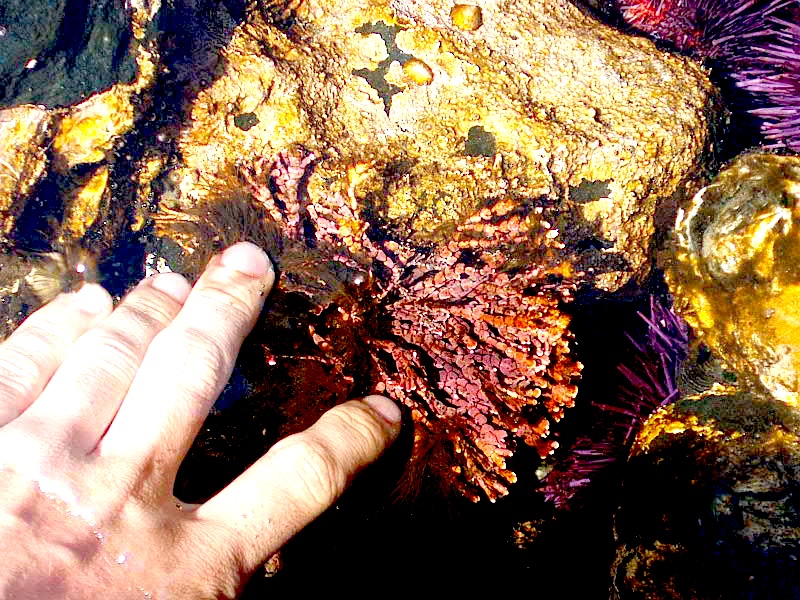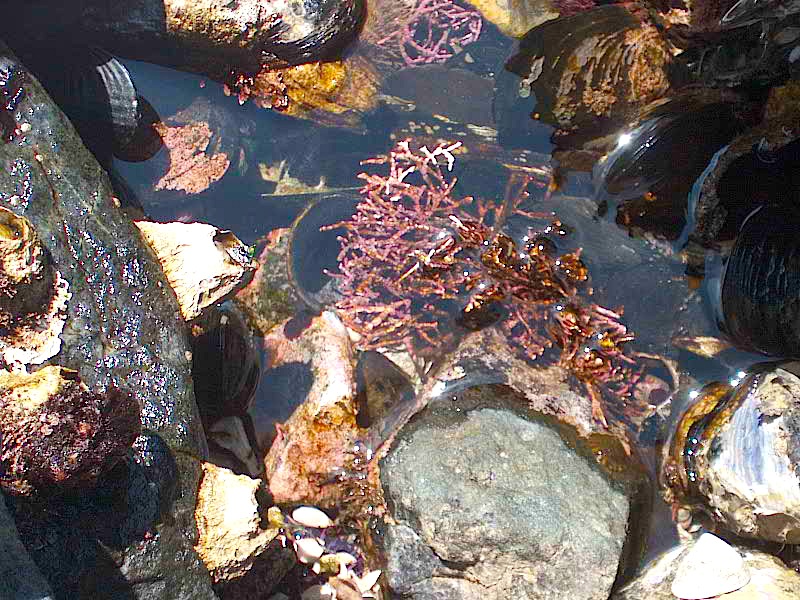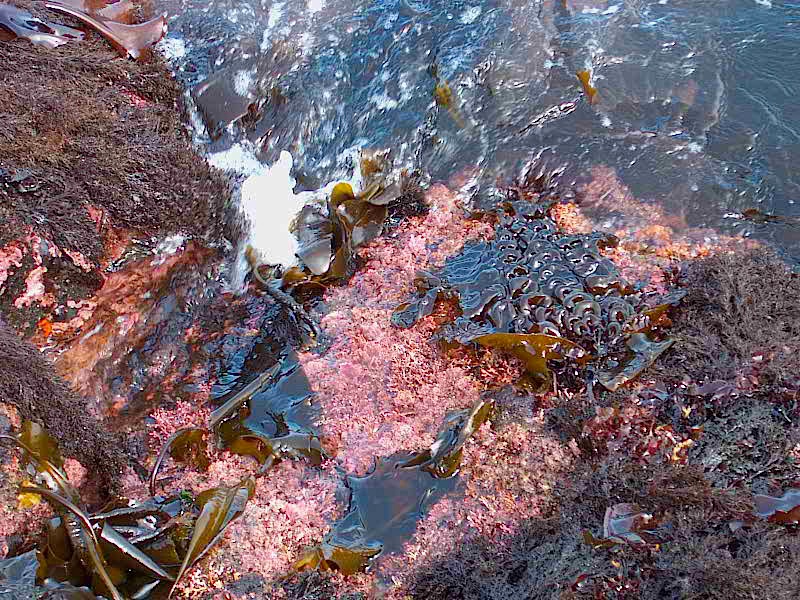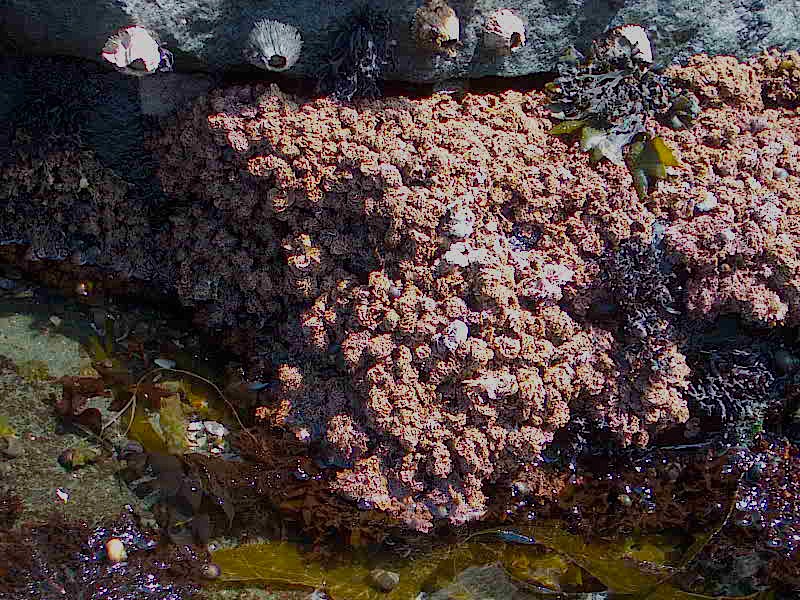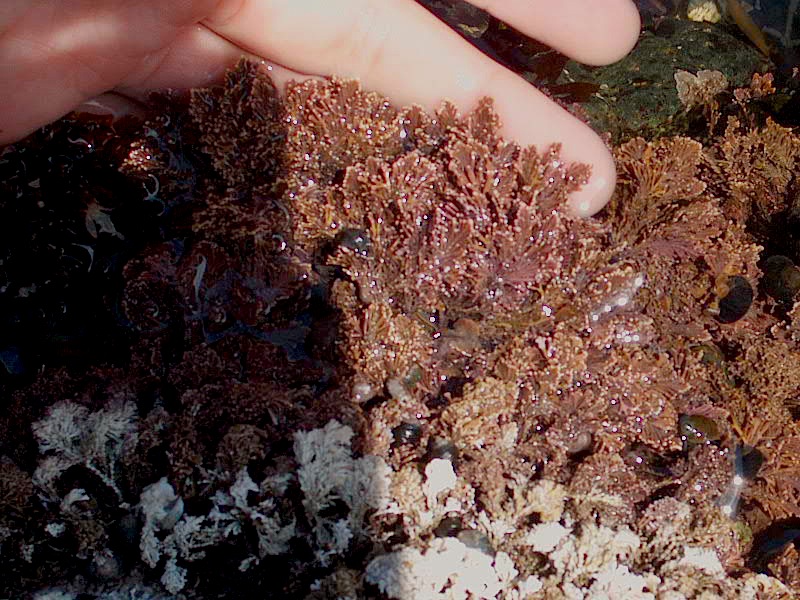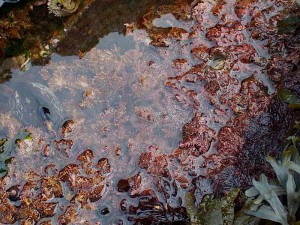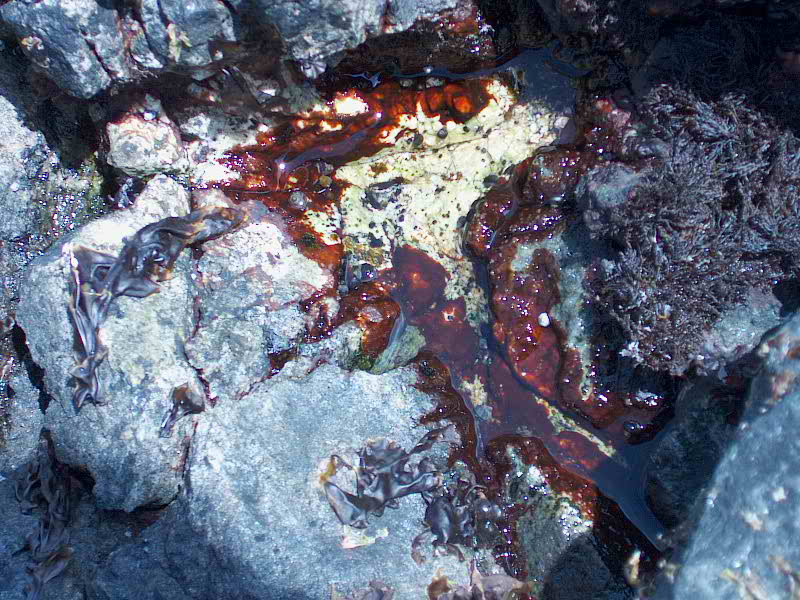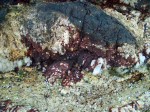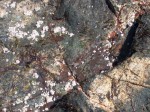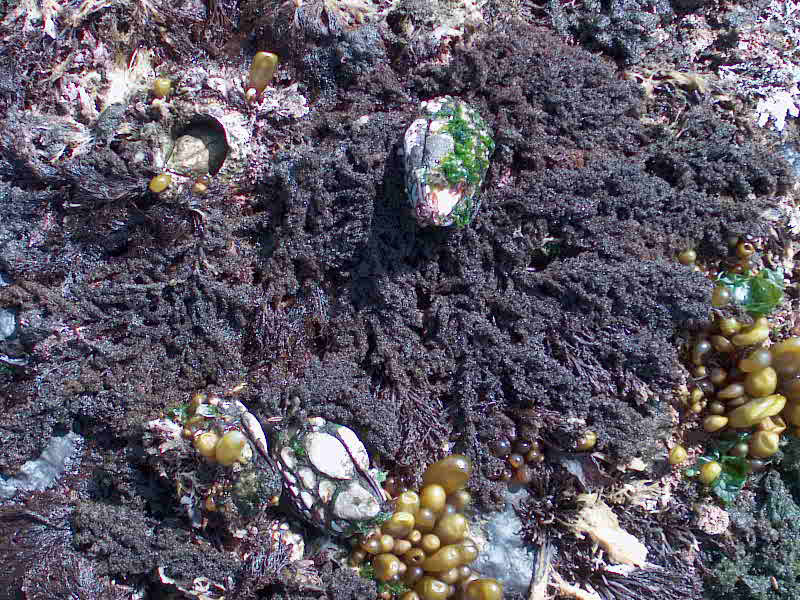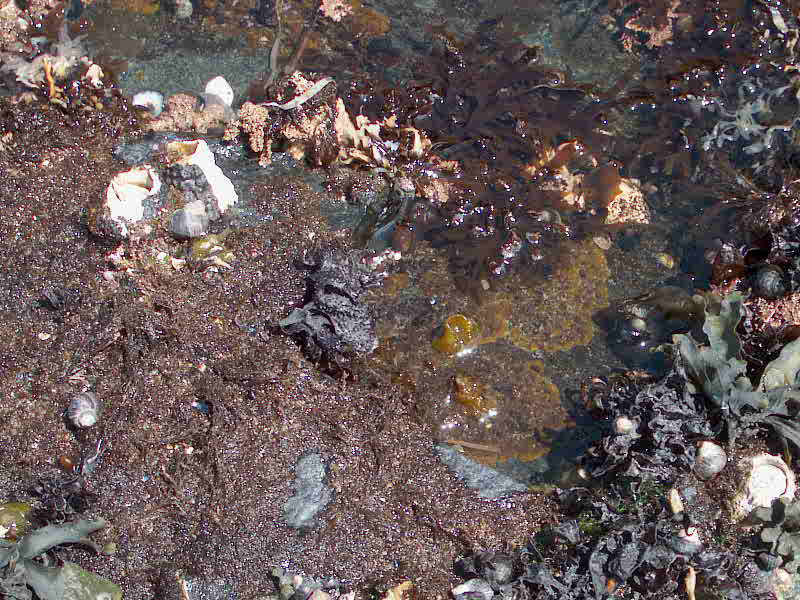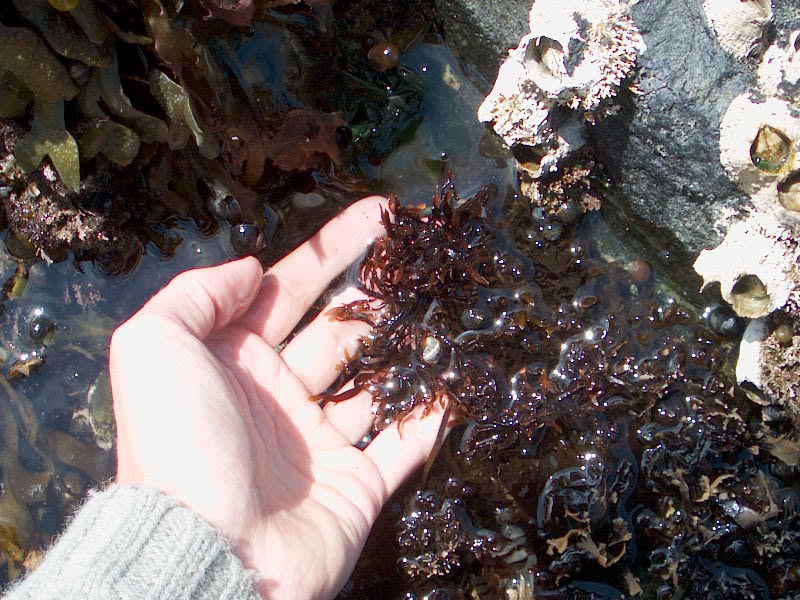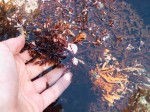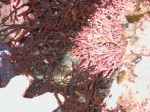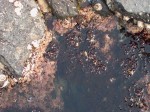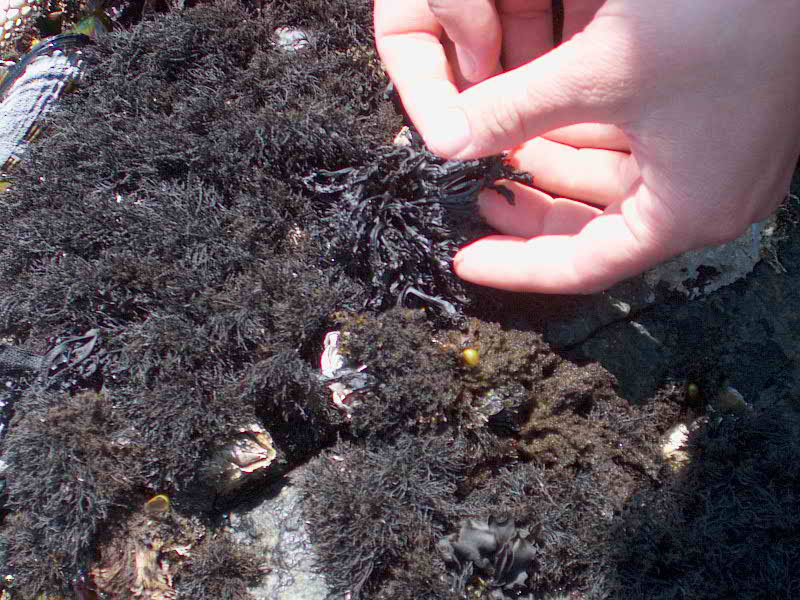
Mastocarpus sp.in a bed of Endocladia sp.Ryan Murphy photo
Phylum: Rhodophyta
Class: Rhodophyceae
Order: Gigartinales
Family: Petrocelidaceae (formerly Gigartinaceae)
Mastocarpus cristata (Setchell) Setchell and Gardner, -or- Gigartina cristata
The photos below are by Ryan Murphy:
-
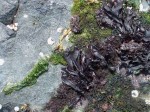
-
Mastocarpus. cristata showing twisted branches
-
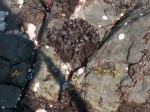
-
M. cristata on rock substrate
-
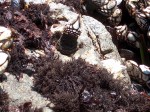
-
Gooseneck barnacle surrounded by Mastocarpus
-
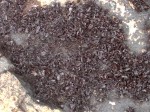
-
M. cristata showing smaller thalli
-
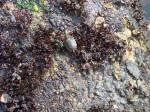
-
M. cristata with the Western Sea Roach
-
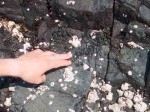
-
Anne Salomon pointing to peterocelii, Mastocarpus can also be seen here
-
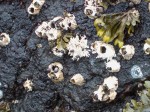
-
Petrocelis encrusting the rock substrate
-
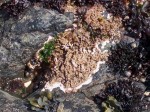
-
Petrocelis surrounding a Corallina sp.
-
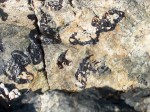
-
Petrocelis making irregular patterns on the substrate
Description: This plant is erect, up to 15 cm. high, dark reddish brown in colour, in clusters, attached to the substrate by a small discoid holdfast. The erect branches are flattened, with branching dichotomous. The flat dichotomies are generally narrow and often twisted. The surface of the plant is at first smooth, later developing many small papillate outgrowths. One tetrasporangiate life stage known as petrocelis is shown in pictures below.
Habitat: On rocks in the lower intertidal zone.
Pacific Coast Distribution: British Columbia to Mexico.
Robert Scagel, 1972
See other members of the Phylum Rhodophyta, Red Algae.
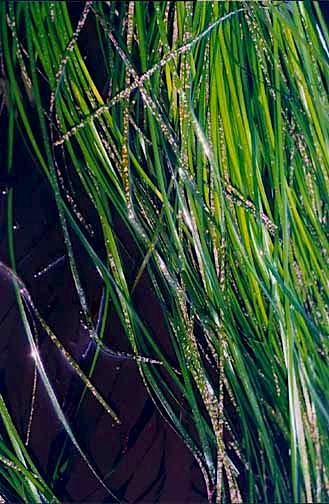 Melobesia mediocris or the seagrass crust is a pink coralline algae which grows as an epiphyte on the surfgrass Phyllospadix sp.
Melobesia mediocris or the seagrass crust is a pink coralline algae which grows as an epiphyte on the surfgrass Phyllospadix sp.  The Race Rocks taxonomy is a collaborative venture originally started with the Biology and Environmental Systems students of Lester Pearson College UWC. It now also has contributions added by Faculty, Staff, Volunteers and Observers on the remote control webcams.Garry Fletcher
The Race Rocks taxonomy is a collaborative venture originally started with the Biology and Environmental Systems students of Lester Pearson College UWC. It now also has contributions added by Faculty, Staff, Volunteers and Observers on the remote control webcams.Garry Fletcher